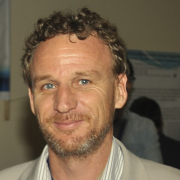Environmental impact assessments (EIAs) associated with extractive and mining activities, but also with any other activity, are often decried by the general public and local stakeholders. In addition, biodiversity conservation has become a major objective and policy focus of many governments over the past two decades (Vandevelde, 2014). As part of the investment actions that companies are required to carry out, they are now required to screen their various projects through environmental assessment (Fotso Chebou Kamdem, 2009).
In Senegal, the presidential majority has included in the revision of its constitution the "right of citizens to enjoy a healthy environment". As a result of this evolution of the vision of the environment in West Africa, linked to the social and economic pillars, EIAs have emerged and their emergence stems from the said evolution of mentalities (Lizotte, 2017). EIA is a tool used by decision makers to identify potential environmental impacts of proposed projects, evaluate alternative approaches, and design and incorporate appropriate prevention, mitigation, management, and monitoring measures (FAO, 2012).
In West Africa, industrial development and the settlement of populations on the coast are causing damage to coastal areas (Lindeboom, 2002). Added to this is the exploitation of mineral deposits (e.g. zircon and zirconium) in some coastal regions such as Senegal (CEA, 2011). The Abidjan Convention, to which Senegal is a party, requires member states to conduct environmental impact assessments prior to the implementation of projects that are potentially harmful to the environment and/or populations.
In the extractive industries, the exploitation of valuable natural resources has often been the cause of many of the problems that the Sustainable Development Goals (SDGs) seek to address (e.g. violent conflict and corruption (UN, 2012; ISCC, UNDP, SDSN & GEF, 2016).
Senegal, as part of its mining policy in 2004, carried allocation of the research permit to Mineral Deposits Limited (MDL) for various minerals, including zircon; this in the regions of Thies and Louga. However, the ESIA, which concerns the dune area of the Niayes ecosystem, which accounts for 80% of Senegal's market garden production, has raised various environmental issues (Ngaido, 2012). The same was noted in the south of the country, in Niafrang, in Casamance with the Australian developer ASTRON.
In The Gambia, ecological damage caused by zircon mining with destruction of their ecosystem has been noted (Elodie, 2015). In Mauritania, major importance is given to the Chami Center, for traditional gold panning. Are used per day, 200 kg of mercury to extract some 20 to 30 kg of gold. Indeed, the winds of Chami transport the sand particles, loaded with mercury, to be deposited on the mudflats of the Banc d'Arguin National Park (PNBA) (PRCM, 2020).
In West Africa, EIAs on the land-sea continuum provide an accumulation of much information that few national institutions are able to provide. Three major questions will be addressed in this doctoral work: are the methodologies used, the sampling plans, the spatial and temporal scales adopted, the interpretation of the results and the public restitutions during the EIA process always carried out according to the rules of the art? Is it possible to optimize them for the common good? Are the data resulting from this work available to national institutions?
Over the years, many criticisms have been made by observers and various study committees regarding the lack of transparency in the EIA evaluation process, the selection criteria, the public feedback method implemented, and the relevance of the information contained in the impact studies (Coté, 2014; SIFE, 2018). Nonetheless, few studies and books address the reality of these challenges despite the fact that they are at the very heart of the effectiveness of environmental protection in a country. Thus, on the Land-Sea continuum or in the marine environment, many shortcomings are noted such as: the choice of options based on socio-economic and not ecological criteria, the scarcity of measurable indicators and quantitative predictions, biodiversity assessed in terms of populations and not effects on ecological processes or genetic diversity (Radisson, 2018).
To be effective, EIA needs a clear framework and methodical monitoring procedures. Often neither is clearly defined (UNEP, 2002). There is even, at times, an oversight of international conventions that bind countries.
The general objective of this study, which will be based on North-West African case studies (e.g. Zircon and Gold), is to (i) make a critical analysis of the methodologies implemented, (ii) conduct a reflection on the valorization of data acquired during EIAs by nationals and (iii) study the process of restitution of EIAs applied to mining activity on the land-sea continuum (in marine or/and coastal environment).


 Echosen
Scroll to top
Echosen
Scroll to top